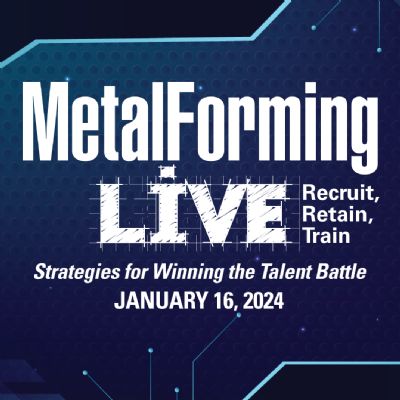 Brad Kuvin
Brad KuvinCultivate Smart People to Create Smart Manufacturing Companies
August 1, 2018Comments
Henry Ford said: “You can take my factories, burn up my buildings, but give me my people and I’ll build the business right back again.”
While that quote (cited in a recent Forbes article) goes back a few generations, perhaps to a time where factories seemed oversaturated with workers compared to today’s lean and automated plants, the message holds true. And, it’s exemplified in an article in this issue of MetalForming highlighting the lean journey of HVAC-system manufacturer Cambridge Engineering. The article (provided courtesy of Target magazine, a publication of the Association for Manufacturing Excellence), quotes Cambridge CEO John Kramer Jr., commenting on some early lean-journey missteps:
“There was too much focus on cost rather than on people,” Kramer admits. “Once I stopped (spouting directions) and allowed the team to focus on key areas for success…the cultural progress started to come alive.”
Kramer, we learn, now subscribes to lean leadership and distributed decision making, ideals explained in the above-mentioned Forbes piece. Titled Smart Manufacturing Quickens Decision Making, by John Clemons, the article notes that distributed decision making eliminates much of the hierarchy in manufacturing companies—rather than questions traveling up the chain of command and decisions coming back down, the people closest to the action (those on the plant floor, for example) are connected to and in control of production processes.
Engaging workers in such a way builds a culture of inclusion and participation. Workers, for example, gain new skill sets to oversee 3D printers, and automated equipment such as collaborative robots (cobots). General Motors’ deep-dive into this evolution (described in a recent Detroit News article) includes training United Auto Workers members in the use of cobots on the assembly line, and on the use of 3D printers—to produce “gadgets for the plant floor.” For example, a GM assembly plant 3D-prints—for less than $3—a tool used to align the VIN number printed onto engines and transmissions, compared to purchasing the tool for $3000 from a vendor.
Don’t underestimate the impact of “smart-manufacturing” projects such as these on the workforce. As employees have the opportunity to learn new skills and take on new responsibilities, worker engagement and buy-in to lean initiatives grows.
Clemons, in his Forbes article, urges manufacturers to give operators immediate access to production-process data; plant managers access to plant-performance data; and supervisors access to dashboards that monitor overall production- and inspection-line key-performance indicators.
In the end, “smart manufacturing is about helping people do their jobs better,” says Clemons.
We see this at Cambridge Engineering, where management has taught workers to see waste, and allowed them to “fix what bugs them.”
Technologies: Management
Comments
Must be logged in to post a comment. Sign in or Create an Account
There are no comments posted. Management
ManagementDOL Announces Nearly $200 Million Allotted for Registered Ap...
Friday, March 1, 2024
 Management
ManagementMetalForming LIVE 2024: Recruit, Retain, Train
Monday, January 22, 2024
 Webinar
Webinar 






 Podcast
Podcast